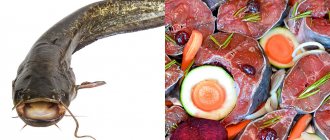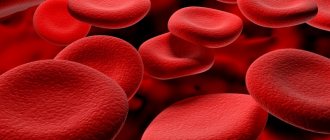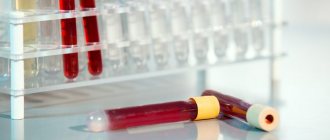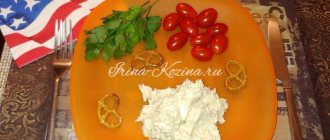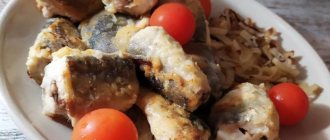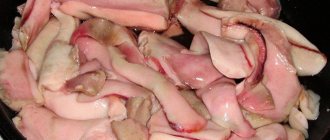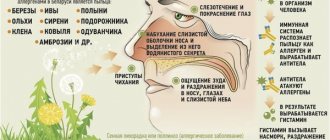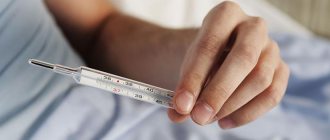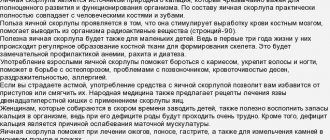Top 8 types of fish to increase hemoglobin in human blood
It is believed that meat increases hemoglobin best, in particular beef, pork, as well as offal (liver, lungs, kidneys).
But for many diseases of the cardiovascular system, such meat is contraindicated, therefore, to increase hemoglobin levels, fish is much better suited, since it contains easily digestible fats with a low cholesterol content.
But which types of seafood are best for raising hemoglobin? What microelements contribute to this?
How to quickly increase the level of hemoglobin in the blood? Foods that increase hemoglobin
About 25% of the world's population suffers from a lack of hemoglobin in the blood plasma. Low hemoglobin is one of the main symptoms of iron deficiency anemia. Most often, the pathology is diagnosed in schoolchildren and women of childbearing age.
Hemoglobin decreases with poor nutrition, during strict diets, with diseases of the internal organs and as a result of bleeding. Specially selected therapeutic nutrition will help improve your health and increase hemoglobin.
Why is it good for hemoglobin?
Everything is extremely simple - fish and any other seafood contain omega-3 and omega-6 unsaturated fatty acids. They, in turn, have the best effect on improving the bioavailability of iron and other metals necessary for the human body.
That is, including fish in the diet helps the body get more iron from food , and this element is the main one of hemoglobin.
Along with fish, nutritionists recommend including seafood such as seaweed, shellfish, shrimp, oysters, red and black caviar in the diet - they contain large amounts of iron. For example, the same caviar contains about 5 mg of iron, but an adult needs only 8–15 mg per day.
Factors influencing hemoglobin
The main hemoglobin is iron. It is through the process of its oxidation and reduction that oxygen is transported and absorbed in the tissues of a living organism.
Iron deficiency is one of the most common causes of a sharp decrease in hemoglobin levels.
However, simply including iron-rich foods in your diet is not enough. This microelement cannot be fully absorbed without certain factors. For example, to break it down into derivative atoms (which then react with certain groups of proteins), vitamin C, B vitamins (especially folic acid), omega-3 and omega-6 unsaturated fatty acids are needed.
At the same time, there are a number of factors that reduce the bioavailability of iron. For example, a high level of calcium in the body inhibits the production of new hemoglobin molecules. If there is a deficiency of the above microelements, iron simply will not be absorbed.
It is also worth considering that a decrease in hemoglobin levels can be provoked by a whole range of diseases of the cardiovascular system and gastrointestinal tract. That is why you should not delay going to the doctor - it is better to immediately establish the cause of hemoglobin deficiency and eliminate this particular factor.
If a low hemoglobin level is caused by a deficiency of micronutrients, then it is recommended to include the following foods in the diet:
- rich in iron;
- rich in vitamins C, E, B-group;
- rich in amino acids (preferably of animal origin);
- exclude those foods that reduce the bioavailability of iron.
In most cases, the above list of recommendations will be enough to normalize the composition of formed elements in the blood.
Why does the body need hemoglobin?
Hemoglobin is responsible for supplying oxygen to cells throughout the body, so it is very important for human health. When this pyment decreases in the blood, the following occurs:
- Oxygen starvation,
- Anemia,
- Fast fatiguability,
- Dizziness,
- Headache.
This can harm the body as a whole. However, if you only feel a certain discomfort, then you need to reconsider your diet and include foods to increase hemoglobin in the blood.
If the problem becomes critical, you should consult a doctor. Then, according to his recommendations, start a course of taking medications.
Symptoms of low hemoglobin in the blood
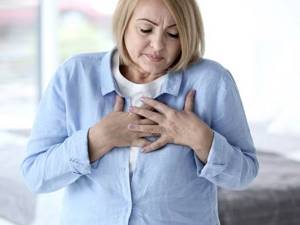
Depending on your overall health, lifestyle and age, iron deficiency anemia can manifest itself in different ways:
- shortness of breath;
- rapid heartbeat;
- pale and dry skin;
- chronic fatigue;
- muscle weakness;
- headaches;
- tinnitus;
- “floaters” in the eyes;
- problems with concentration;
- irritability;
- drowsiness;
- slight increase in body temperature;
- the appearance of cracks in the corner of the mouth;
- brittleness and fragility of nails, the appearance of longitudinal grooves on them;
- hair loss
Important! You should not draw conclusions about the presence of anemia based on one or two of the listed symptoms. This is only a signal to contact a doctor and take a blood test in order to obtain reliable information about the patient’s condition.
The norm of hemoglobin in the blood of women and men
| Age | Floor | Hemoglobin level (g/l) |
| Less than 2 weeks | F/M | 135-200 |
| 2 weeks - 1 month | F/M | 115-180 |
| 1-2 months | F/M | 90-130 |
| 2-6 months | F/M | 95-140 |
| 6-12 months | F/M | 105-140 |
| 1-5 years | F/M | 100-140 |
| 5-12 years | F/M | 115-145 |
| 12-15 years | AND | 112-152 |
| M | 120-160 | |
| 15-18 years old | AND | 115-153 |
| M | 117-160 | |
| 18-65 years old | AND | 120-155 |
| M | 130-160 | |
| Over 65 years old | AND | 120-157 |
| M | 125-165 |
Norms for hemoglobin levels in the blood
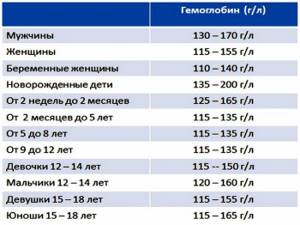
The indicator serves as an indicator of the functioning of the human body, therefore its assessment is carried out during a general clinical blood test. In the blood of an adult, the content of iron-containing protein is 120-150 g/l for women and 130-160 g/l for men. In pregnant women, its level may drop to 110 g/l, which is also normal.
Hemoglobin levels in children depend on their age. The younger the child, the greater his need for iron. The following indicators will be the norm:
- in newborns - 210 g/l;
- up to 1 month – 170.6 g/l;
- 1 - 3 months - 132.6 g/l;
- 4 - 6 months - 129.2 g/l;
- 7 - 12 months - 127.5 g/l;
- from 2 years – 116-135 g/l.
Table of herbal products that increase hemoglobin
| The product's name | Iron content in mg per 100 g |
| Seeds | 35,0 |
| Sea kale | 16,0 |
| Lentils | 11,8 |
| Wheat bran | 11,1 |
| Soybeans | 9,7 |
| Buckwheat | 6,7 |
| Peanut | 4,6 |
| Dogwood | 4,1 |
| Oatmeal | 3,9 |
| Rye bread | 3,9 |
| Pistachios | 3,9 |
| Almond | 3,7 |
| Dried apricots | 3,2 |
| Dried prunes | 3 |
| Walnut | 2,9 |
| Spinach | 2,7 |
| Corn | 2,7 |
| Persimmon | 2,5 |
| Beet | 1,7 |
| Peas | 1,5 |
| Pomegranate | 1 |
| Apples | 0,1 |
How to increase your fish catch?
Over 7 years of active fishing, I have found dozens of ways to improve the bite. Here are the most effective ones:
- Bite activator . This pheromone additive attracts fish most strongly in cold and warm water. Discussion of the bite activator “Hungry Fish”.
- Increased gear sensitivity. Read the appropriate manuals for your specific type of gear.
- Pheromone -based lures .
Along with fish, nutritionists recommend including seafood such as seaweed, shellfish, shrimp, oysters, red and black caviar in the diet - they contain large amounts of iron. For example, the same caviar contains about 5 mg of iron, but an adult needs only 8–15 mg per day.
Table of animal products that increase hemoglobin
| The product's name | Iron content in mg per 100 g |
| Pork liver | 20,2 |
| Chicken liver | 17,5 |
| Oysters | 9,2 |
| Beef liver | 6,9 |
| Chicken yolk | 6,7 |
| Mussels | 6,7 |
| Beef heart | 4,8 |
| Pork heart | 4,1 |
| Beef tongue | 4,1 |
| Beef meat | 3,6 |
| Quail yolk | 3,2 |
| Pork tongue | 3,2 |
| Lamb meat | 3,1 |
| Sardines | 2,9 |
| Sardines (canned) | 2,9 |
| Black caviar | 2,4 |
| Pork meat | 1,8 |
| Chicken's meat | 1,6 |
| Turkey meat | 1,4 |
| Tuna (canned) | 1,4 |
Top 10 foods that increase hemoglobin
Hemoglobin levels decrease due to a lack of iron in the body. Therefore, it is necessary to eat foods that are rich in this microelement. They can be of both animal and plant origin.
Here is a table of foods with the highest iron content.
| Product name | Fe content per 100 g of product |
| Pork liver | 20 mg |
| Sea kale | 16.5 mg |
| Wheat bran | 11 mg |
| Oysters | 9 mg |
| Blueberry | 7.5 mg |
| Buckwheat | 6 mg |
| Heart | 4.5 mg |
| Peanut | 4 mg |
| Beef | 3.5 mg |
| Pork | 2 mg |
Heme iron contained in animal products is absorbed more quickly and completely than non-heme iron. Our body is able to obtain up to 30% of the iron present in meat products. The body can absorb no more than 5% of plant foods.
Products to increase hemoglobin
Products to increase hemoglobin are an excellent alternative remedy to help patients avoid long-term use of medications. This is due to the fact that medications, if used for a long time, negatively affect the functioning of internal organs and systems.
Ingredients that contribute to an increase in this indicator must first of all be enriched with iron, as well as other micronutrients that allow it to be better absorbed in the human body.
It should be noted that there is an established daily intake of iron, which is slightly different for males and females. For example, women need to take at least 18 milligrams in food, and men need 10 milligrams.
Very often, patients are interested in the question: why is it necessary to include certain foods in the menu to increase hemoglobin in the blood? This need is due to the fact that in the vast majority of situations, anemia, i.e., a low content of the substance that gives the blood its red color, occurs due to the fact that a person is not eating properly. It follows from this that if the regime is normalized, its production indicators will return to normal.
Low hemoglobin in adults and children can be suspected if the following signs are present:
- constant drowsiness;
- rapid fatigue;
- pale skin;
- bluish lips;
- frequent attacks of dizziness;
- causeless shortness of breath;
- cramps in the lower extremities;
- increased heart rate.
It is when such symptoms occur that you need to seek qualified help and take a general clinical blood test. If a person is found to have low levels of iron-containing protein, he will need to follow a diet.
The main symptoms and signs of low hemoglobin in the blood.
What should you pay attention to? I will list the main signs of low hemoglobin:
- Paleness of the skin.
- Weakness, dizziness.
- Increased fatigue
- Shortness of breath and rapid heartbeat.
- The appearance of cracks in the corners of the mouth.
- Constantly cold hands and feet.
- Some people have leg cramps.
- Difficulty swallowing food and some others.
Pay attention to your health if it’s hot outside and your hands and feet are cold, or if you suddenly want to chew chalk, clay or ice. Or you suddenly began to like strong odors that others find unpleasant. This is also a reason to consult a doctor and check your hemoglobin level in the blood. The skin becomes dry, the nails break and become slightly concave. Hair problems appear and they begin to fall out. Excessive irritability, loss of appetite, weakness may also appear, and the heart begins, as they say, to “play tricks” - the rhythm is lost, it is difficult to climb even 2-3 floors, shortness of breath may appear.
Foods with the highest iron content
The micronutrient iron has many ingredients. Nevertheless, clinicians have compiled a list of products that contain its highest concentration.
Table of foods that increase hemoglobin in the blood:
Iron content in milligrams
Chicken egg yolk
Quail egg yolk
It is worth noting that the above figures correspond to 100 milligrams of one or another component of the dish.
At the same time, it must be remembered that the absorption of such a microelement depends on several factors:
- acidity of gastric juice;
- intestinal condition;
- combination of products;
- the presence of certain additional substances in them.
How to increase hemoglobin in older people
What foods increase hemoglobin in the blood of elderly patients? Based on the results of a general blood test, almost a quarter of older people are regularly prescribed to take iron supplements. However, a decrease in the level of red blood cells after the age of 60 is not a problem of dietary culture and not the body’s loss of ability to absorb iron and vitamins. The decisive factor is diseases associated with deterioration of vascular patency, the presence of tumors, and disorders of the gastrointestinal tract.
Products that increase hemoglobin in the blood of older people are selected taking into account existing diseases, so there is no single list suitable for all cases of a decrease in the number of red blood cells. Recipes that have only individual intolerance as contraindications are considered universal - they can be recommended to patients of almost all categories of age-related diseases:
- 200 g of boiled buckwheat, 150 g of walnuts are ground in a meat grinder and combined with 250 ml of liquid honey. The mixture is stored in the refrigerator and consumed 1 teaspoon twice a day, before meals.
- Dried apricots, soft prunes and a mixture of different nuts are taken in equal parts and ground in a meat grinder. You can add honey for viscosity. The mixture is eaten 1 teaspoon 3 times a day, regardless of meals.
Medicinal teas made from rose hips, hawthorn, and rowan will be useful for older people. Infusions are prepared in the morning in an amount of 150 ml and drunk before breakfast in small sips, possibly with the addition of honey.
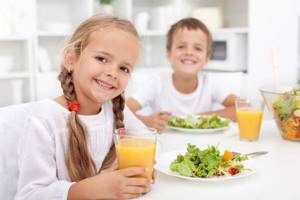
Other Healthy Ingredients
Not only the listed ingredients can increase hemoglobin in the blood. As mentioned above, such an element is contained in almost every product. It follows from this that patients are not prohibited from enriching the menu:
- strawberries and grapes;
- watermelon and melon;
- bananas and pomegranate;
- garlic and raspberries;
- beets and apples;
- fermented milk products;
- parsley and spinach;
- plums and peaches;
- dried fruits, in particular prunes;
- nettle;
- cocoa and rosehip-based drinks;
- potatoes, namely baked directly in the skin.
Beetroot, which is useful both raw and boiled or baked, most effectively copes with iron deficiency. In addition to the main positive property, it activates red blood cells, which makes the blood enriched with oxygen. In addition to this vegetable, the following may also be useful:
- carrots – both raw and boiled;
- tomatoes – do not lose their beneficial properties even after heat treatment;
- zucchini.
As for fruits, thanks to modern research it has become known that for iron deficiency anemia, peaches should be consumed first. However, with low hemoglobin, the following may also be relevant:
- quince and persimmon;
- kiwi and plums;
- pears and apricots.
Among the berries, the most useful are:
It is noteworthy that before eating this or that product, you should consult a clinician. This need is explained by the fact that some people may not even be aware that they have individual intolerance. In such cases, instead of a beneficial effect, a severe allergic reaction may develop.
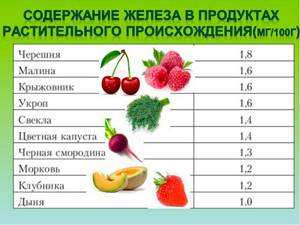
Norms for hemoglobin content in blood
Different groups of people have their own standards for hemoglobin content in the blood. In adults, this indicator is determined depending on gender, age and physiological state (pregnancy, menstruation, etc.). Hemoglobin is measured in grams per liter of blood (g/l).
Its normal content in women:
- From 12 to 18 years – 120-160 g/l,
- From 18 to 60 – 120-150,
- From 60 – 117-138.
During pregnancy, a decrease in hemoglobin is acceptable:
- 1st, 3rd trimester – not lower than 110 g/l,
- 2nd trimester – 105 g/l.
If the indicator is lower, then the pregnant woman is prescribed treatment and a special diet, including foods with a high iron content.
It is also permissible to decrease hemoglobin from the 1st to the 10th day of menstruation, which is associated with blood loss. By the 10th day of the cycle, its level should return to normal.
In men, the content of this complex protein depends only on age:
- From 12 to 18 years – 130-160 g/l,
- From 18 to 60 – 136-177,
- From 60 – 125-150.
In children the norm is:
- From birth to 2 weeks – 135-200 g/l,
- 2 weeks – 1 month – 115-180,
- 1 – 2 months – 90-130,
- 2 – 6 months – 95-140,
- 6 months – 1 year – 105-140,
- From 1 to 5 years – 100-140,
- From 5 to 12 years – 115-145.
Thus, at all stages of a person’s life, these indicators undergo changes, so it is recommended to undergo periodic tests and examinations. After all, the lack of any substances in the body does not appear immediately. Outwardly, it becomes noticeable only with serious changes, when it is no longer possible to do without the help of a doctor.
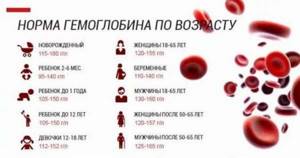
Freshly squeezed juices that increase hemoglobin
Products to increase hemoglobin can be consumed not only fresh or after heat treatment. Some of them will be most effective if taken orally in the form of juices.
Those drinks that are sold in stores will not bring anything good to people suffering from low levels of the main component of blood - red blood cells. Only natural drinks prepared independently at home will be useful.
It is necessary to highlight the following juices containing iron:
- carrot;
- apple;
- beet;
- pomegranate;
- squash;
- potato.
They can be taken orally either in pure form or as a vitamin cocktail. When choosing to increase the most important element in the blood in this way, several rules must be followed:
- Under no circumstances should drinks be stored in the refrigerator;
- It is best to drink the juice 10 minutes after preparation - this is how it will release all its beneficial properties;
- to obtain such a unique medicine, it is important to use ripe ingredients;
- You should drink the drink about half an hour before meals, half a glass.
To enrich the taste and beneficial qualities, you can add a teaspoon of honey. If the juice concentration is high, it is best to dilute it with purified water in a ratio of 1:2.
Rules for increasing the degree of iron absorption
For patients with a low concentration of iron-containing protein, it is not enough just to know which foods contain a large amount of the necessary element. In order for them to be most effective, there are several recommendations to consider.
The bioavailability of iron can be increased by:
- ascorbic acid, which is found in cauliflower, rose hips and bell peppers;
- copper is by-products, nuts and cereals;
- folic acid – seafood, offal and dried fruits;
- citric and malic acid – citrus fruits, tomatoes and peppers;
- amino acids – meat and fish;
- sugar.
At the same time, the following take part in reducing bioavailability:
- calcium, represented by fermented milk products;
- tannin – strong tea and coffee;
- phytates – bakery products;
- phosphates – preservatives, sweet carbonated drinks and processed cheese;
- soy and milk proteins.
In addition, you need to take into account other factors that interfere with increasing the main component of red blood cells. These include:
- addiction to bad habits;
- influence of stressful situations;
- lack of proper rest;
- spending insufficient time outdoors;
- lack of treatment for the underlying disease;
- incorrect therapy - only a clinician can draw up a list of acceptable products for a particular patient.
Absolutely all of the above components of the diet act as not only effective tools that increase hemoglobin, but also prophylactic agents against problems associated with it. To speed up the process of increasing the content of one of the most important blood elements, you can additionally use vitamin and mineral complexes, as well as nutritional supplements, but this can only be done after the approval of the attending physician.
In the absence of individual contraindications, they can be eaten without restrictions in daily volume, including for children and women during pregnancy.
Source: medanaliz.pro
Eight foods that increase hemoglobin
Hemoglobin, which supplies oxygen to all cells of the body, is very important for humans. With its decrease, caused by various reasons (from stress to pregnancy), oxygen starvation, anemia, and fatigue may appear.
If the situation is very serious and becomes dangerous to health and life, then the doctor prescribes special medications that help quickly increase hemoglobin levels. If the situation does not require therapy, then introducing foods that increase hemoglobin into the diet will quickly bring it back to normal.
We have compiled a selection of 8 foods that need to be eaten regularly not only during periods of decreased hemoglobin, but always, for preventive purposes.
Beef, rabbit, veal, liver, tongue - these products should become regular on your table both during a diet that increases hemoglobin and in the daily menu. Pork liver contains about 20 milligrams of iron per 100 grams of product, beef tongue - 5 milligrams per 100 grams. It is advisable to choose fresh meat and cook it without over-frying, so that it turns out medium or lightly done. To maintain normal hemoglobin levels, 50 grams of meat or offal per day is enough, and to increase it - at least 100 grams per day.
Foods that increase hemoglobin levels
If iron levels are not critically low, drug treatment can be avoided. It is enough to adjust the diet recommended for low hemoglobin. First you need to determine which foods increase hemoglobin from consumption.
Liver
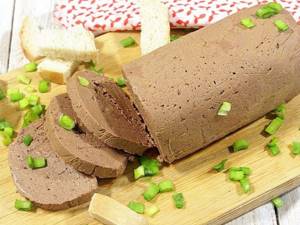
It is a hematopoietic organ, which means it contains a lot of iron-containing protein. Liver pate is a tasty and emergency aid for anemia. However, it is worth limiting the use of the product during pregnancy - liver, like all offal, contains a lot of vitamin A, which in excess can harm the baby.
Meat
Iron is absorbed from products of animal origin by 20% (for comparison: from fish - 10%, from products of plant origin - only 2 - 6%). Beef is most effective against anemia, then lamb and pork, and poultry is worse. It is better to use vegetables as a side dish for meat rather than cereals, pasta or bread. These foods interfere with the absorption of iron.
Buckwheat
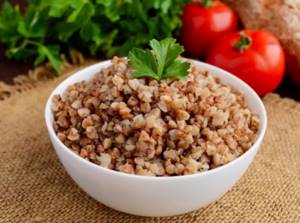
This cereal contains a lot of iron and folic acid. The first component increases hemoglobin levels and improves the quality of hematopoiesis. The second ensures better absorption of iron-containing protein. With regular consumption of buckwheat, the patient experiences internal and external changes, including cereals recommended by nutritionists to maintain slimness.
Halva
Although the usual sunflower halva is an oriental sweet, rich in vitamins (33 mg of iron per 100 g of product), the most useful is the lesser known sesame halva (it contains 50 mg of iron per 100 g of product). Just 50 g of this confectionery product is enough to provide the daily requirement of iron for a person.
Beet
The vegetable contains an iron-magnesium set, folic acid, copper, which has a beneficial effect on hematopoiesis. The product can be eaten raw (here it is better to limit yourself to 100 g of product, a larger amount will lead to stomach upset), baked or boiled, as part of salads, or in the form of beetroot or multi-component juice.
Pomegranate
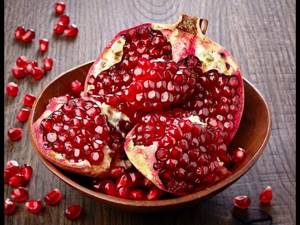
The well-known belief that pomegranate contains a lot of iron is a myth. In fact, it works a little differently. It contains beneficial substances (for example, anthocyanins), which help the production of blood, enriching the body with oxygen. In addition, vitamins and amino acids also contained in pomegranate increase the tone of the body, helping to raise hemoglobin levels.
Carrot
Despite the small amount of iron in this vegetable, carrots are recommended for consumption in cases of anemia. Moreover, it is better to focus on the red variety - it contains more microelements that help reduce the “free” level of calcium in the blood, which increases the bioavailability of iron. It is better to drink carrot juice before lunch before meals.
Dried fruits
The iron content in them is 4 - 5 times higher than in fresh fruits. You need to pay attention, first of all, to dried apples, dried apricots, raisins, prunes, figs, dates. All of them are rich in B vitamins, as well as other minerals that strengthen the endocrine system and are effective in treating anemia. To maintain your figure, it is better to consume dried fruits in the first half of the day.
Nuts
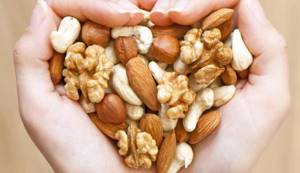
Nutritionists recommend eating walnuts, pistachios, pine nuts, cashews, and peanuts. For vegetarians, this is a valuable product - nuts are a reliable source of protein, required in the absence of meat products in the diet. Grinded in a meat grinder along with dried fruits and seasoned with honey, they can easily replace one of your meals.
Fish roe
Almost 95% of the iron from this product is absorbed by the body thanks to the large amount of folic acid. Despite the fact that yellow caviar contains less iron than black or red, it is valuable due to its high content of omega-3 acids, which reduce cholesterol in the blood, reducing the risk of anemia. Heat treatment of caviar “kills” the folic acid it contains, so it is recommended to consume it raw (washed or salted).
Honey
In addition to iron, it contains manganese and other minerals necessary for the process of hematopoiesis. The most useful honey is dark varieties - honeydew, heather, buckwheat. It should be remembered that when exposed to high temperatures, honey loses its beneficial properties, so it is not recommended to put it in tea. The ideal combination of the dish would be honey and nuts.
Nettle
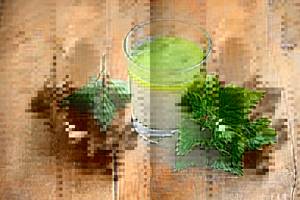
The heme atoms included in its composition ensure almost maximum absorption of iron. It is not recommended to use nettle if you have problems with the stomach and/or duodenum. You can consume it in the form of juice prepared using a juicer or blender, decoction or infusion.
Eggs
Although chicken eggs are inferior to fish roe in nutritional value, they contain magnesium, calcium, potassium, folic acid, and vitamins B and E. They have a beneficial effect on the condition of the entire body, which helps increase hemoglobin. It has been scientifically proven that the benefits of quail eggs for anemia are much higher than chicken eggs, although we can safely say that both of these products will benefit the body.
Fish
Nutritionists all over the world talk about the benefits of fish, any fish - both river and sea. It contains Omega-3 and Omega-6 fatty acids, which have a beneficial effect on the absorption of iron by the body. The most recommended are lamprey, Pacific halibut, river eel, salmon, Atlantic mackerel, trout, and sprat.
Chocolate
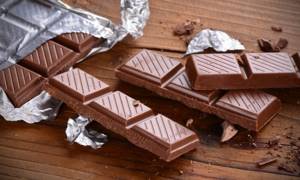
It is worth mentioning that we are talking exclusively about natural dark chocolate with a high cocoa content. And the endorphins produced by the body when consumed have a beneficial effect on our overall health. One bar of chocolate weighing 100 g is enough to provide the body with the daily requirement of iron.
Rose hip
Many people don’t realize, but rose hip decoction can be drunk not only for colds, but also for anemia. It is the leader of all berries in terms of the amount of ascorbic acid, which is why it is so beneficial for the body. However, pregnant women should treat it with caution, since too strong a decoction in the last stages of pregnancy can lead to an increase in tone.
Currant
The healthiest thing is black currant. This berry contains vitamins A, C, E, B6, as well as iron. It is these substances that the body requires in order to produce hemoglobin in sufficient quantities. However, the daily dose of berries should not exceed 200 g, since excess ascorbic acid interferes with the absorption of iron. Therefore, currants are also included in the list of products that lower hemoglobin.
Strawberry
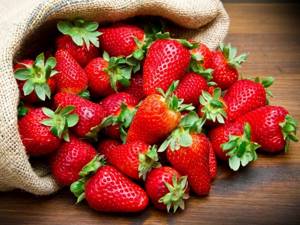
Contains vitamins A, C, E, B6, folic acid and iron. The body uses each of these elements to produce iron-containing protein, so this berry is recommended for patients to increase hemoglobin. But do not forget that strawberries are a strong allergen, so you need to eat them with caution. And it is better not to do this on an empty stomach to prevent an attack of gastritis.
Turmeric
100 g of dried spice (also called turmeric) contains about 42 mg of iron. By the way, thanks to him it has such a characteristic yellow color. This spice can replace half of your home medicine cabinet. It is a good idea to use it in combination with honey for better iron absorption. Try to add the spice when preparing various dishes - in addition to the benefits, turmeric will give them a pleasant golden color.
Parsley
This green contains about 2 mg of iron per 100 g of product. Although this is not much compared to fish or meat, parsley also contains folic acid, vitamins A, E and manganese. These beneficial substances stimulate the absorption of iron. Greens are not afraid of heat treatment, so they can be consumed fresh, dried or as a decoction.
Foods that increase hemoglobin in the blood
A decrease in the level of hemoglobin in the blood leads to the development of anemia or anemia. Most often it manifests itself as lethargy, pale skin, bluish lips, weakness, a constant feeling of fatigue, loss of performance, decreased emotional tone, shortness of breath, rapid heartbeat at the slightest exertion, lack of appetite, digestive disorders, drowsiness, frequent attacks of dizziness, cramps in the lower extremities .
Causes of low hemoglobin
Fans of strict diets aimed at intensive weight loss run the risk of developing anemia. The lack of animal food in the diet, which is the main supplier of iron, as well as an unbalanced menu can lead to serious dysfunction of all organs and systems, including the hematopoietic one.
The main causes of low hemoglobin levels are:
- External and internal bleeding;
- Autoimmune diseases;
- Worm infestations;
- Low iron levels due to an unbalanced diet;
- Malignant blood pathologies;
- Lack of enzymes that regulate the process of iron absorption;
- Frequent blood donation (more than four times a year);
- Dysbacteriosis in children.
Foods that increase hemoglobin in the blood
So how can you increase hemoglobin at home without resorting to medications? Just keep in mind that you shouldn’t expect an immediate effect from consuming foods with iron. With proper diet correction, it will take at least two to three weeks before hemoglobin levels increase.
The best foods to “raise” hemoglobin are: offal, beef, lamb, pork, chicken, turkey, chicken egg yolk, quail egg yolk, oysters, mussels, fish, pistachios, peanuts, cashews, pine nuts, spinach, lentils, buckwheat, legumes , oatmeal, barley, wheat, dogwood.
To maximize the absorption of iron from incoming food, the presence of the following vitamins is necessary: C (ascorbic acid), B9 (folic acid) and B12 (cyanocobalamin).
The best sources of vitamin C are: rose hips, sweet bell peppers (especially red varieties), black currants, kiwi, horseradish, sea buckthorn, broccoli, Brussels sprouts and cauliflower, sauerkraut, parsley, radishes, all citrus fruits, strawberries, wild strawberries, pineapple , dried fruits.
The best sources of vitamin B12 are: beef liver and other offal, rabbit and turkey meat, beef, lamb, hard cheeses, sea fish and all seafood, including seaweed, egg yolks, brewer's yeast.
The best sources of vitamin B9 are: beef liver, brewer's yeast, peanuts, legumes, seeds, kelp (seaweed), spinach, dandelion leaves and other leafy greens, cod liver, avocados, apricots, dried fruits.
Some foods are rich in both iron, ascorbic acid and B vitamins. Thus, we can conclude that the following foods best increase hemoglobin
- Beef and all offal.
- Seafood.
- Brewer's yeast.
- Cheeses.
- Sea fish.
- Berries, seeds and dried fruits.
Products to increase hemoglobin can be consumed not only fresh or after heat treatment. Some of them will be most effective if taken orally in the form of juices.
The following juices containing iron can be distinguished:
They can be taken orally either in pure form or as a vitamin cocktail.
Foods that increase hemoglobin
It is extremely important for every cell in our body to receive oxygen. Diets, poor nutrition, digestive problems, and stress can lead to a decrease in hemoglobin levels and, as a result, disruption of normal oxygen supply. Today we’ll tell you what to eat to stabilize the indicator, what vitamins you shouldn’t forget about, and how to check your protein level in the blood.
Analysis of concepts.
Hemoglobin is a special type of protein that contains iron and, due to its ability to be synthesized with oxygen, performs one of the most important functions in the body - transporting oxygen to all cells and tissues along with blood circulation. The lower the level of hemoglobin in the body, the less oxygen reaches the cells, which negatively affects health.
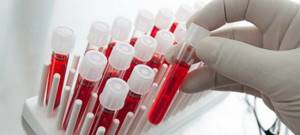
Possible symptoms of low hemoglobin levels.
- fatigue, severe loss of strength
- dyspnea
- bluish lips and nails
- weight loss/nausea/heartburn
- pale skin
- hand tremors
- spots in the eyes and dizziness
- hands and feet are constantly cold
- strange passion for strong odors
- desire to chew chalk, ice
Low hemoglobin (anemia) is a rather dangerous condition of the body, this can lead to irreversible consequences. If you begin to notice these signs, we advise you to go and get a blood test.
If you don’t want to calculate your daily iron intake and, based on this, formulate your diet, you can simply start taking a vitamin B complex. In this section, you can choose the foods and vitamins you like, all of which help improve your blood condition.

Go to catalog
Correct solution.
Hemoglobin, the norm of which varies for men, women and children, can be easily brought into order if the problem is noticed in time. The first and most effective weapon is to change your diet, add to it all the necessary healthy vitamins and microelements that will fill your cells with iron at the proper level. Vegetarians and vegans should especially closely monitor their hemoglobin levels, since everyone else most often increases their level by consuming meat products and offal.
